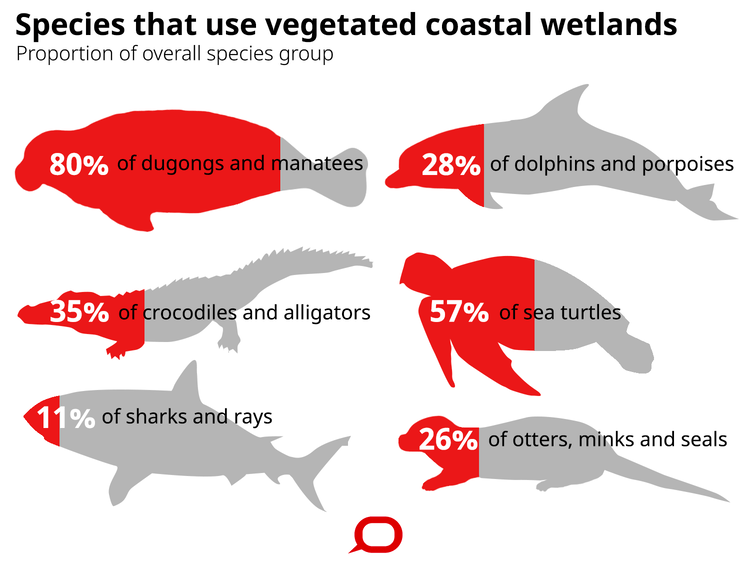Study reveals important connections between mangroves and marine megafauna
Researchers find that 13% of all marine megafauna are connected to coastal wetlands
Mangroves are bursting with biodiversity; it’s well known that their matrix of roots are one of the great nurseries of the sea, and their branches teem with birds, reptiles, insects, crabs, and mollusks. But it doesn’t stop there. A new study from The Global Wetlands Project reveals important connections between coastal wetlands and marine megafauna.
Marine megafauna are some of the ocean’s most iconic large creatures: sea turtles, manatees, dolphins, seals, and sharks. While we typically don’t associate these animals with coastal wetlands, the study shows that these habitats play a role in some of their most significant life processes.

Researchers examined how marine megafauna rely on coastal wetlands for shelter, grazing, foraging and hunting, and breeding. For example, mangrove fruits have been found in sea turtle stomach samples and juvenile lemon sharks congregate in the safety of mangrove-fringed lagoons. Many species rely on prey that has spent some portion of its life cycle in coastal wetlands, as identified by isotopic analyses. In total, researchers found that 13% of all marine megafauna are connected to coastal wetlands, and brought the total number of wetland-associated marine megafauna to 174, an increase of 59% from what was previously known.
The results indicate that these marine habitats are important in supporting and sustaining megafauna populations. They also pointed to the valuable functions that megafauna perform for coastal wetlands – in other words, it’s a mutual relationship. They link aquatic and terrestrial ecosystems by transporting nutrients across boundaries, from the deep waters to the shallow, and species with large ranges or that migrate can disperse nutrients and plant propagules across wide areas. When herbivores graze and predators hunt, they keep each other and the wetland vegetation in balance, optimizing a wetland’s ability to store blue carbon.
To protect marine megafauna, the coastal wetlands they depend upon must be protected too. This means including them in species assessments and conservation planning. It is particularly important for threatened species, like dugongs, sea turtles, and river dolphins. A future for mangroves means a future for some of our most emblematic and important marine animals.